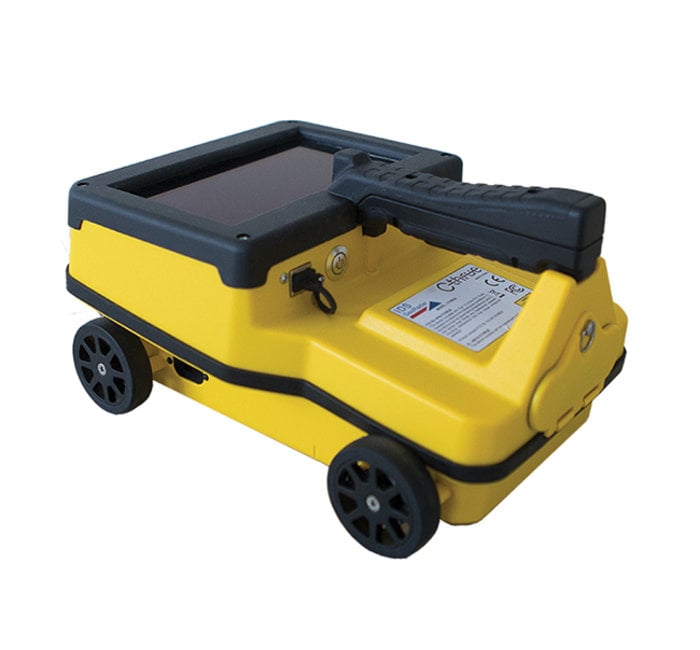Concrete Scanning: An Important Action In The Direction Of Guaranteeing Architectural Stability and Security
In the world of building and infrastructure upkeep, the value of concrete scanning can not be overemphasized. This thorough procedure holds the key to revealing prospective hazards concealed underneath the surface of apparently strong frameworks. By employing advanced innovation and methodologies, concrete scanning functions as a pivotal device in guaranteeing that the stability and security of structures and bridges are maintained to the greatest standards. However, beyond its surface-level ramifications, the function of concrete scanning expands far much deeper than meets the eye.
Relevance of Concrete Scanning
Concrete scanning plays a critical function in guaranteeing the structural stability and security of buildings and framework tasks. By using advanced technologies such as ground-penetrating radar (GPR) and electro-magnetic induction, professionals can non-destructively inspect concrete frameworks to discover potential problems, voids, ingrained items, and reinforcement layout. This procedure makes it possible for early discovery of anomalies that can endanger the stability of a framework, stopping pricey damages and making certain the security of owners.
Prior to exploration, reducing, or coring into concrete, scanning aids determine the precise locations of rebar, post-tension cables, and other ingrained elements, reducing the danger of accidental hits that can lead to structural weaknesses. Furthermore, concrete scanning help in high quality control by validating the thickness of concrete covers and detecting any kind of disparities that might influence the general durability of the framework.
Modern Technology for Concrete Inspection

Advantages of Early Detection
Timely detection of structural problems can substantially reduce dangers and ensure the long life of building projects. By recognizing potential problems early in the building process, stakeholders can take aggressive steps to address problems before they escalate right into bigger and a lot more expensive problems. One of the essential advantages of very early detection is the prevention of architectural failures, which can present severe safety threats and bring about project delays and economic losses.
In addition, early discovery permits for prompt repair best site services and upkeep, which can help extend the life expectancy of the structure. By addressing issues without delay, building and construction groups can avoid expensive fixings or also the need for premature replacement of structural components. This proactive strategy not only conserves money and time but additionally enhances the overall security and longevity of the building and construction project.
Additionally, very early discovery can enhance task preparation and decision-making by offering stakeholders with important understandings into the condition of the framework. Armed with this information, task managers can make enlightened selections relating to building and construction methods, timelines, and products, resulting in much more reliable and successful project outcomes.
Making Certain Structural Stability
Ensuring the structural security of a building project is vital to its safety and longevity. Structural security describes the capacity of a building or framework to preserve its form and feature under environmental conditions and different loads. To attain this, comprehensive assessment and surveillance of the structure are crucial. Concrete scanning plays an important role in ensuring structural stability by finding potential issues such as voids, delamination, or support corrosion that might compromise the stability of the framework with time.
By making use of advanced scanning technologies like ground-penetrating radar (GPR) and electro-magnetic induction, building professionals can non-invasively inspect concrete structures to identify locations of issue underneath the surface. This positive strategy allows for the very early detection of problems or weaknesses, enabling timely repair work or support to avoid structural failings.
Regular concrete scanning during various construction stages and throughout the life cycle of a framework can help maintain its stability, alleviate risks, and guarantee the security of occupants. By prioritizing architectural security through concrete scanning, building and construction projects can improve their resilience and durability, inevitably contributing to higher safety and security and long life.

Preventing Important Failures
To guard against catastrophic events, careful monitoring and aggressive maintenance are vital in averting critical failures within architectural structures. Identifying prospective problems prior to they rise is vital to avoid structural failures. Carrying out routine examinations, such as concrete scanning, can reveal covert issues like gaps, fractures, or corrosion that might endanger the integrity of a structure. By making use of advanced scanning innovations like Ground Penetrating Radar (GPR) or Concrete X-ray, engineers can non-destructively analyze the condition of concrete and Visit This Link identify weak factors that require support or repair - RainierGPR Service Areas.

Verdict
In verdict, concrete scanning plays a critical duty in ensuring structural honesty and safety by making use of sophisticated modern technology for very early detection of possible issues. This aggressive method helps avoid vital failures and ensures the security of structures. It is vital to focus on concrete evaluation as a common technique to safeguard the long life and safety of buildings and framework.
Concrete scanning plays an important duty in making sure the structural integrity and safety of buildings and facilities projects. Additionally, concrete scanning help in top quality control by verifying the density of concrete covers and discovering any inconsistencies that might impact the total durability of the framework. Concrete scanning plays an important duty in making certain architectural security by spotting possible issues such as gaps, delamination, or reinforcement deterioration that could jeopardize the stability of the structure over time.

In verdict, concrete scanning plays a critical duty in making certain architectural honesty and safety by using advanced innovation for early discovery of prospective problems.